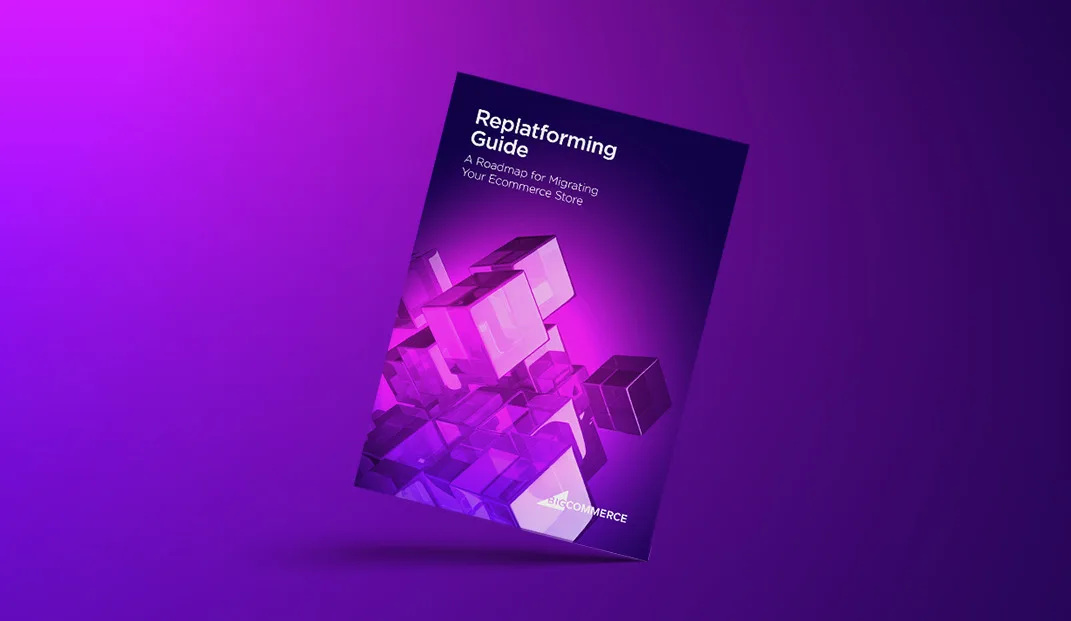
Replatforming Guide: A Roadmap for Migrating Your Ecommerce Store
Make your ecommerce replatforming project a success with our step-by-step guide filled with best practices from enterprise migration experts.

BigCommerce vs. Salesforce Commerce Cloud: Q&A with The ZaneRay Group


BigCommerce vs. Salesforce Commerce Cloud: Q&A with The ZaneRay Group
Get The Print Version
Tired of scrolling? Download a PDF version for easier offline reading and sharing with coworkers.
A link to download the PDF will arrive in your inbox shortly.
Succeeding in today’s market means focusing on the future. With shifting shopper behaviors and unpredictable economic conditions, enterprise businesses must be able to quickly adapt to whatever changes the future may bring.
However, monolithic ecommerce platforms, like Salesforce Commerce Cloud, can make it difficult for many businesses to achieve this kind of agility, hindering their ability to deliver innovative shopping experiences.
Not only that, but legacy technologies can also slow down your time to market, decrease efficiency, increase security threats and lengthen page-load times.
As an enterprise business, your ecommerce platform can either be your greatest asset or your greatest liability — which is why it’s crucial to choose one that will sustain your business in the long term.
The ZaneRay Group: Q&A
To get more insights, we sat down with The ZaneRay Group’s Penny Porterfield, Vice President of Operations and Business Development, and Kirk Cornelius, Vice President of Strategy and Communications, for their take on why enterprises are making the switch from monolithic platforms like Salesforce Commerce Cloud to BigCommerce’s flexible solution.
What are some of the limitations of monolithic solutions like Salesforce Commerce Cloud?
Kirk Cornelius: “A lot of these larger enterprise brands lead with innovation and so their business is evolving quickly. But with monolithic platforms, if you change anything on the frontend, there’s a possibility that it will break something on the backend. And that’s where marketing teams lose velocity, because they’re constantly waiting on their development teams to implement every change for the site.”
Penny Porterfield: “Monolithic platforms don’t really foster the kind of creative branding experiences that enterprises are looking for, such as stepping outside of templates and being able to blend their content and ensure their brand presence in the shopping experience.”
What are the most common reasons that merchants migrate away from Salesforce Commerce Cloud?
PP: “We’ve helped several brands migrate off of Salesforce Commerce Cloud, or Demandware, because they just were not able to move quickly in the marketplace. They didn’t have the ability to stay out of the development arena every time they really wanted to innovate and make changes to their site at all.
“They were beholden to resources that were not only expensive, but it also took a while to implement different functionality. Lack of agility was one part, and lack of flexibility was another.”
KC: “We’ve heard some merchants say, even for an internal team, that they’re six months out from being able to make a site change, and that has a lot to do not only with how in-demand those resources are — and in some cases limited — but also that there’s a lot more testing that has to be done on a monolithic platform.”
What makes BigCommerce a better fit than Salesforce Commerce Cloud for enterprise merchants?
PP: “BigCommerce is a great option because it not only provides flexibility, but it doesn’t have this huge monolith. You don’t have to learn this massive language and get certified and have all of these team members that are specifically there to support the development part of it, but you can also work with multiple agencies and make site changes yourself if you want to.”
KC: “BigCommerce’s strategy and open-source technology fosters innovation, because BigCommerce knows what they do really well, and they rely on other partnerships to do what they do really well.
“It really allows merchants to push further, to invent, to find other partners that may be able to come in and easily be implemented into that environment.”
How does BigCommerce support The ZaneRay Group in providing quality solutions for enterprise merchants?
PP: “A lot of times we ask, ‘How can we be more innovative? How can BigCommerce be more innovative?’ One of the most incredible things about our partnership is that we bring those ideas to BigCommerce, and they actually want to listen.
“We can see those innovative changes coming to life in both their roadmap and their product, and sometimes even further than we had expected.”
The Final Word
Rather than remaining on legacy monolithic solutions, now is the time to invest in modern technology that allows your business to innovate on the fly.
With BigCommerce’s composable architecture, enterprise businesses have the agility to not only respond quickly to unexpected change, but also create the cutting-edge shopping experiences they envision.
Operating since 2000, ZaneRay designs and creates innovative enterprise ecommerce solutions that disrupt the norm. The agency got its start in the B2B arena working for Patagonia and other outdoor brands but soon grew into the digital arena, designing frontend websites for ecommerce enterprises.
With its out-of-the-box design and development approach, ZaneRay was even named the BigCommerce 2021 Headless Award Winner and works with several BigCommerce merchants, including Skullcandy, Black Diamond, Yeti Cycles and more.
Are you an enterprise business looking to modernize your current tech stack? Download our latest white paper to learn how your business can make the switch from legacy technologies to BigCommerce’s composable solution.

Shelley Kilpatrick is an accomplished content marketer who creates compelling, original content designed to educate and empower ecommerce businesses. She is currently Senior Manager of Content Marketing at BigCommerce where she leads a world-class team of content writers and strategists. Outside of work, she loves exploring all things Texas BBQ and craft beer with her husband and two dogs.


